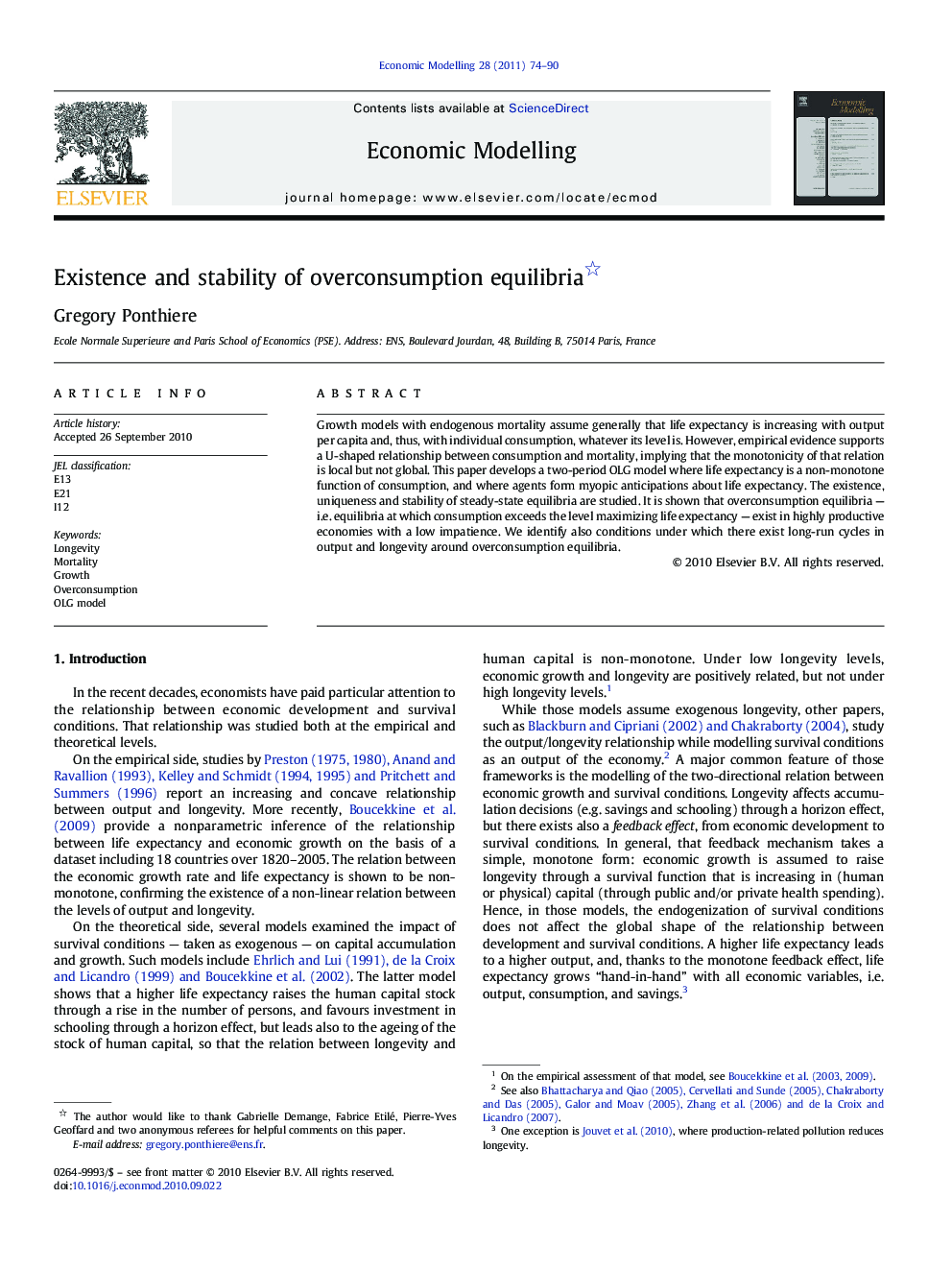| Article ID | Journal | Published Year | Pages | File Type |
|---|---|---|---|---|
| 5055769 | Economic Modelling | 2011 | 17 Pages |
Growth models with endogenous mortality assume generally that life expectancy is increasing with output per capita and, thus, with individual consumption, whatever its level is. However, empirical evidence supports a U-shaped relationship between consumption and mortality, implying that the monotonicity of that relation is local but not global. This paper develops a two-period OLG model where life expectancy is a non-monotone function of consumption, and where agents form myopic anticipations about life expectancy. The existence, uniqueness and stability of steady-state equilibria are studied. It is shown that overconsumption equilibria - i.e. equilibria at which consumption exceeds the level maximizing life expectancy - exist in highly productive economies with a low impatience. We identify also conditions under which there exist long-run cycles in output and longevity around overconsumption equilibria.
Research Highlights⺠The relation between life expectancy and consumption is non-monotone. ⺠We study the dynamics of an OLG economy with a non-monotone survival function. ⺠Overconsumption equilibria exist in highly productive economies with a low impatience. ⺠Overconsumption is the outcome of patience rather than impatience. ⺠Long-run economic and demographic cycles can exist around overconsumption equilibria.
